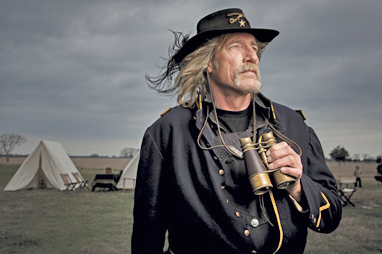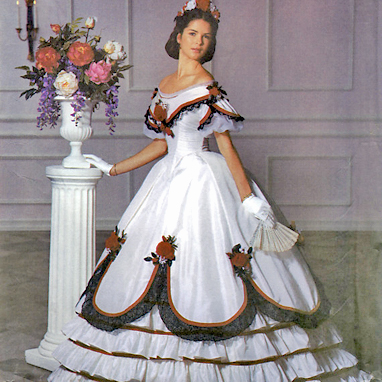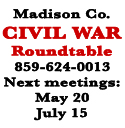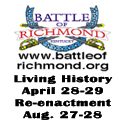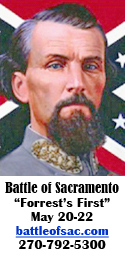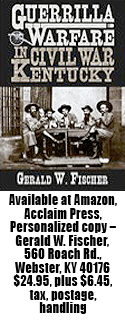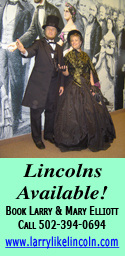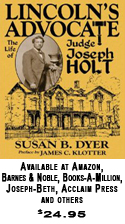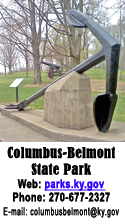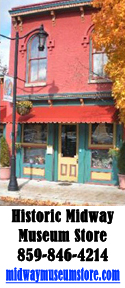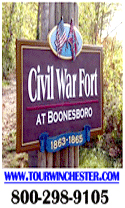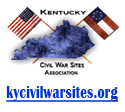|
Perryville burn expected to benefit
quail, deer, variety of small animals
More than 150 acres of the Perryville Battlefield were burned during March in order to give native wildlife a fresh start.
“We’re replacing bad grass with good grass,” Joni House, preservation and program coordinator for Perryville Battlefield, said. “It’s a good thing to let it burn.”
The prescribed burn is expected to lead to native grassland habitat for quails, as well as other species, according to Terri Brunjes, a biologist with Kentucky Fish and Wildlife. More
Berea festival cancelled over dispute
concerning Confederate Battle Flag
The Confederate Battle Flag, long under attack by liberal groups, has been banned from display at a Berea festival and has led to the cancellation of a long-standing event in the Madison County city.
In late March, the Berea Chamber of Commerce board of directors voted unanimously to cancel its annual Spoonbread Festival after Mayor Steve Connelly called for banning the display or sale of merchandise depicting the Battle Flag. More
British businesses and need for cotton
helped Confederacy fight Civil War
Thanks to Great Britain, the South was able to prevail during the Civil War.
The reason was cotton.
In the early 1860s, the Lancashire cotton industry, which dominated the mid-19th century British economy, was devastated by the Civil War. In April 1861, President Abraham Lincoln ordered a blockade of the Confederate southern ports, the outlet for the raw cotton on which Lancashire’s mills depended. Attempts to find alternative sources of supply from India or Egypt had little success. Deprived of essential raw material, spinning mills and weaving sheds closed down or resorted to short-time working. Unemployment mounted rapidly. By November 1862, three-fifths of the English labor force, 331,000 men and women, was idle. It was a period known as the Lancashire Cotton Famine. But British businesses, particularly those in Liverpool, came to the rescue. More
Good re-enactors are musts, when filming
Civil War for television, motion pictures
Actor Sam Elliott may have said it best.
“These guys come with their wardrobe, they come with their weaponry. They come with all the accouterments. They also come with the (Civil War) stuff in their heads and in their hearts.”
Elliott worked with hundreds of Civil War re-enactors in the film Gettysburg and, in a documentary about the film, had nothing but praise for those who plied their hobby in living history and battle scenes. More
Could guerrilla warfare won Civil War
for South? History scholar raises question
A distinguished history professor at the University of Arkansas maintains the Confederacy lost the Civil War by miscalculation.
It could have been different if the South had waged a guerrilla campaign, Daniel E. Sutherland suggests.
“Tens of thousands of rabid Confederates wanted to fight as guerrillas – and at least 30,000 of them (a conservative estimate) ended up doing so,” he said. More
Civil War communication prospered
because of Louisville’s Norvin Green
By BRYAN BUSH
Bugle Staff Writer
There was at least one thing upon which the Union and Confederacy could agree. Civil War communication would be virtually impossible without the transcontinental telegraph. And that was possible because of pioneers such as Louisville’s Norvin Green.
Green was a successful doctor and politician, but his contribution to communication with the expansion of the telegraph had an immense impact on the Civil War. More
|
|
|
|
Guilty or Not Guilty?
Round table speaker was among those
voting to reverse decision for Dr. Mudd
By DOUG LIPPMAN
Bugle Staff Writer
Civil War Round Table meetings usually are interesting to those fascinated by history. But occasionally, a presentation is so compelling everyone is reluctant to depart. Such was the case with the January meeting of the Madison County CWRT.
The subject for the evening was familiar to most. Dr. Samuel Mudd was the physician who set John Wilkes Booth’s broken leg six hours after Booth had assassinated President Abraham Lincoln. The nation’s immediate reaction to the assassination was shock, but it soon turned to a thirst for revenge. When those rounded up were tried, the defendants were found guilty by a military court. This included Dr. Samuel Mudd, who received a life sentence to be served at the federal prison in the Dry Tortugas. More
Hunt for guerrilla fighter Big Zay Coalter
ended at remote Anderson cemetery
By GERALD FISCHER
On Dec. 17, I joined a group of historians led by two Army Corps of Engineers Forest Rangers and visited a remote Anderson County cemetery containing the grave of Isaiah Coalter.
Big Zay, as he was called by his associates, stood 6-foot-6 and was handsome with the physique of an athlete. He had coal black hair and eyes and may have had Native American blood. He was a member of Co. F, 5th Kentucky Cavalry, believed captured with John Hunt Morgan in 1863 and sent to P.O.W. Camp Douglas. He either escaped or was exchanged, because he was active in 1864 and 1865 as a guerrilla fighter. More
Judge Joseph Holt Home becomes
JAG training site for Indiana Guard
The home of the nation’s first Judge Advocate General has officially become the JAG Onsite Training Program headquarters for the Indiana National Guard.
On March 5, three Blackhawk helicopters landed behind the Judge Joseph Holt Home in Hardinsburg to begin four training sessions. Thirty-five guard representatives participated in the training exercise that included a luncheon in the Breckinridge County mansion that is under renovation.
An introduction to the Holt Home was provided by Breckinridge County Judge Executive Maurice Lucas and President of the Friends of the Holt Home Susan B. Dyer. More
Kentucky’s Civil War leaders …
Murray was newspaper editor, governor,
controversial figure following Civil War
(EDITOR’S NOTE: This is the 35th in a series about Kentucky’s officers and battle leaders during the Civil War.)
Eli Houston Murray had the unenviable task of confronting the first cavalry charge of Nathan Bedford Forest.
That happened at the Battle of Sacramento in December 1861 as the Confederates won the day routing Murray’s Union troops. Murray’s 3rd Kentucky Cavalry suffered casualties of one-third and the then major had a horse shot from under him. He escaped capture only by seizing a horse from a Confederate officer who had just been killed.
Murray, a native of Cloverport in Breckinridge County, also led the 3rd Kentucky as it participated in the Kentucky Campaign of 1862 where they captured the 3d Georgia Cavalry. Later that year, Murray was promoted to colonel and took permanent command of the regiment. More
Bugle Briefs ...
Henry rifle, fathers of two WWII generals
fought at Battle of Perryville in 1862
In its promos to raise funds for saving land at Perryville Battlefield, the Civil War Trust listed 10 facts about the site, two of which are particularly interesting.
Fact one: The Henry repeating rifle probably was used in combat for the first time at Perryville.
Fact two: Fathers of two prominent World War II generals fought at Perryville. More
|
|
|



